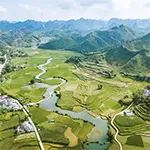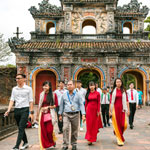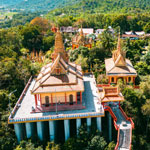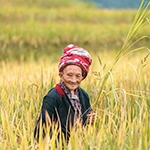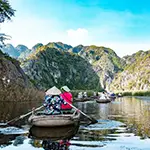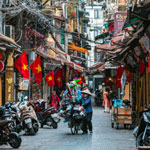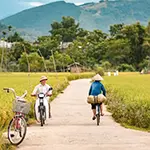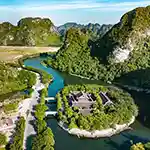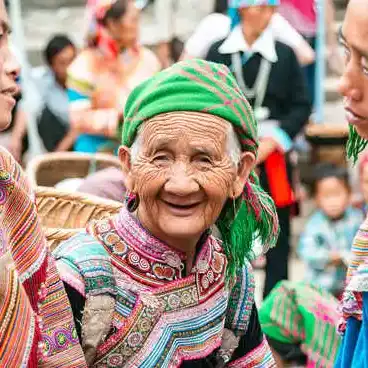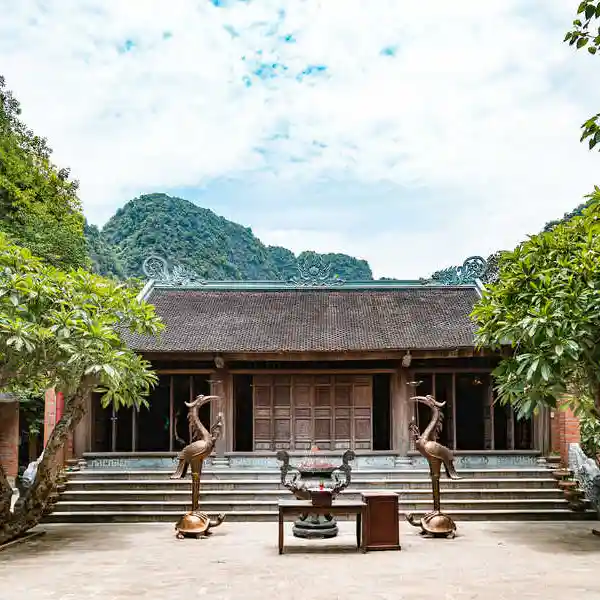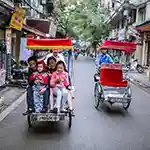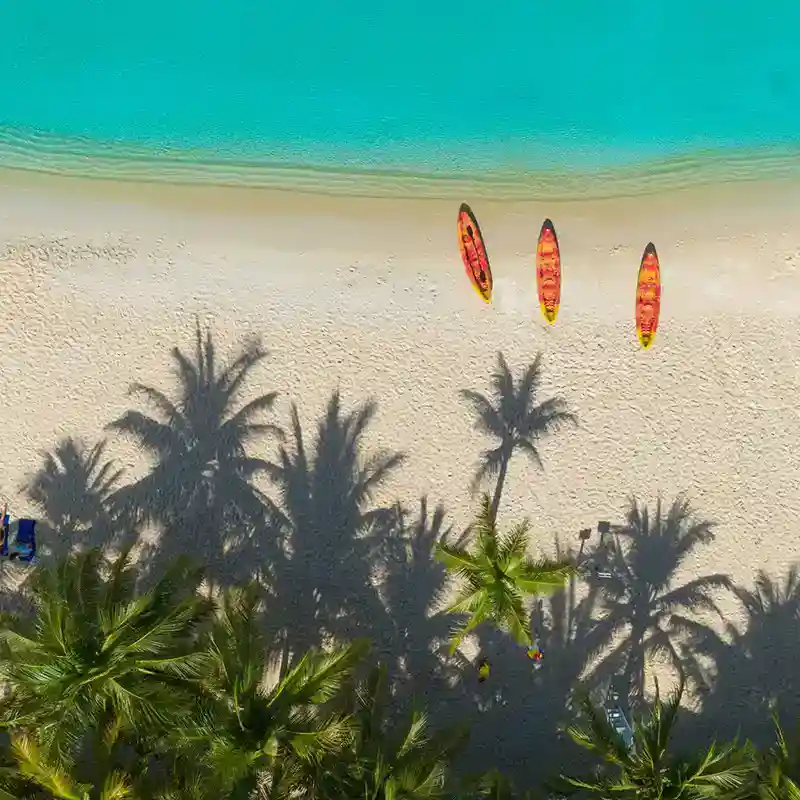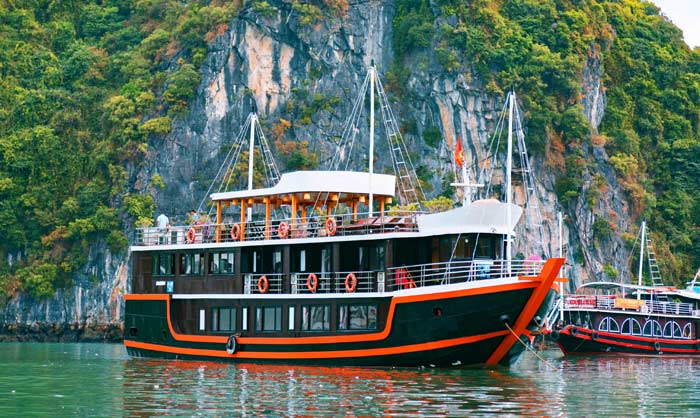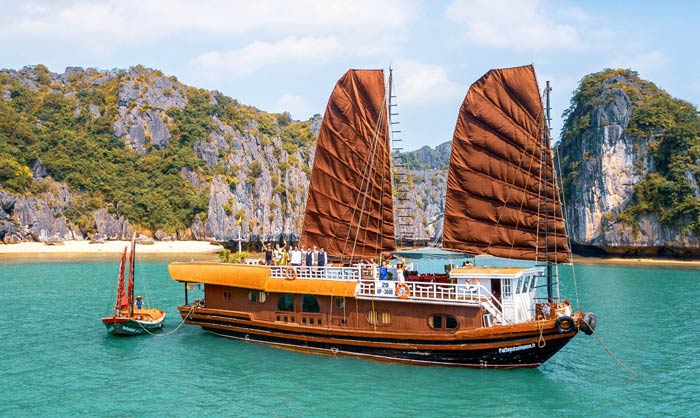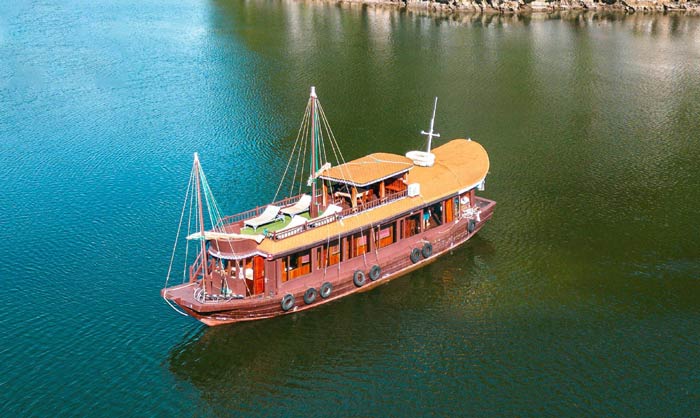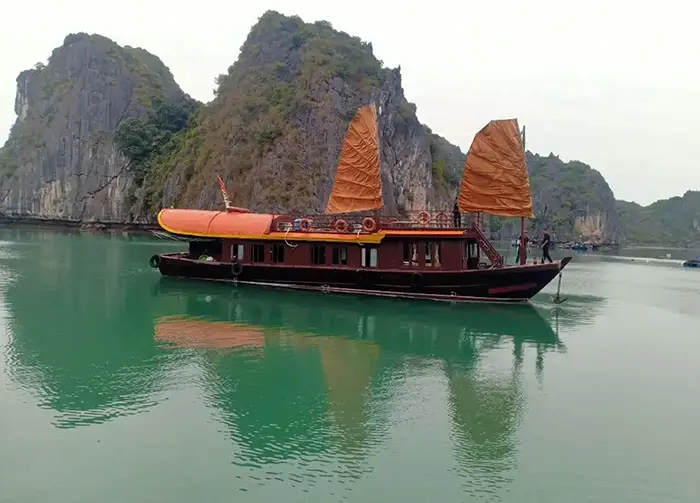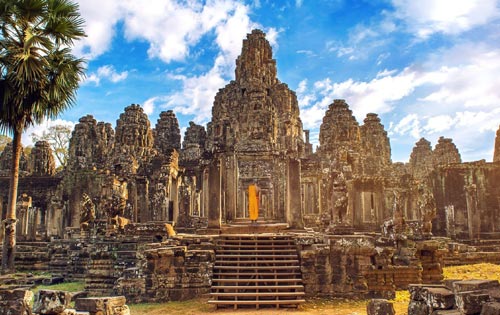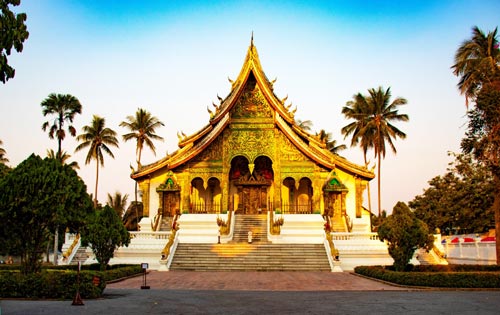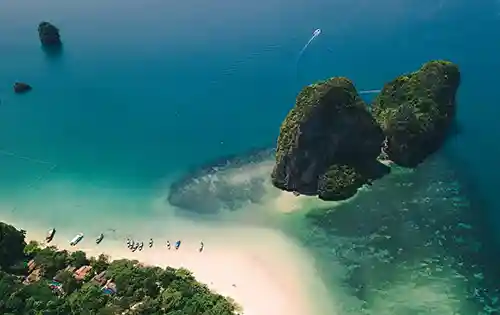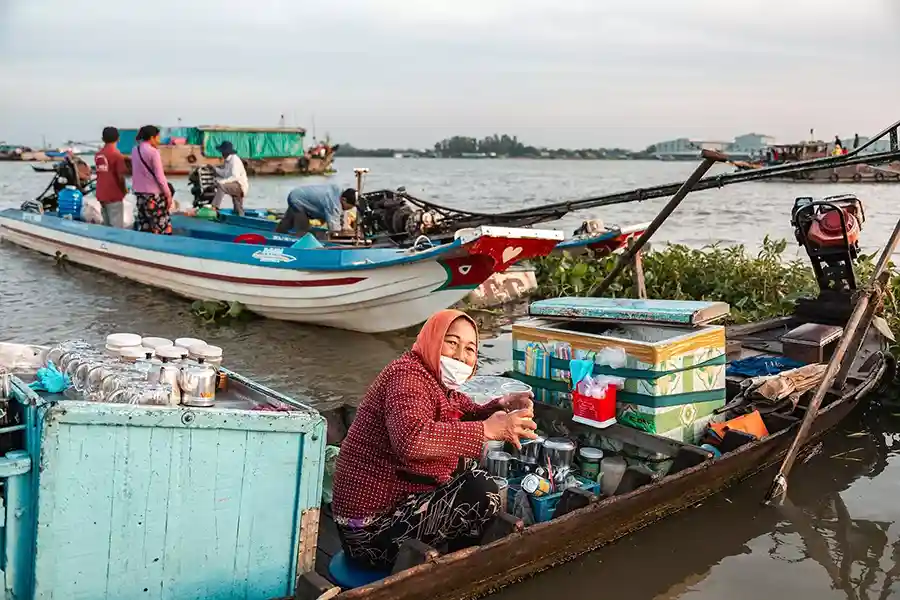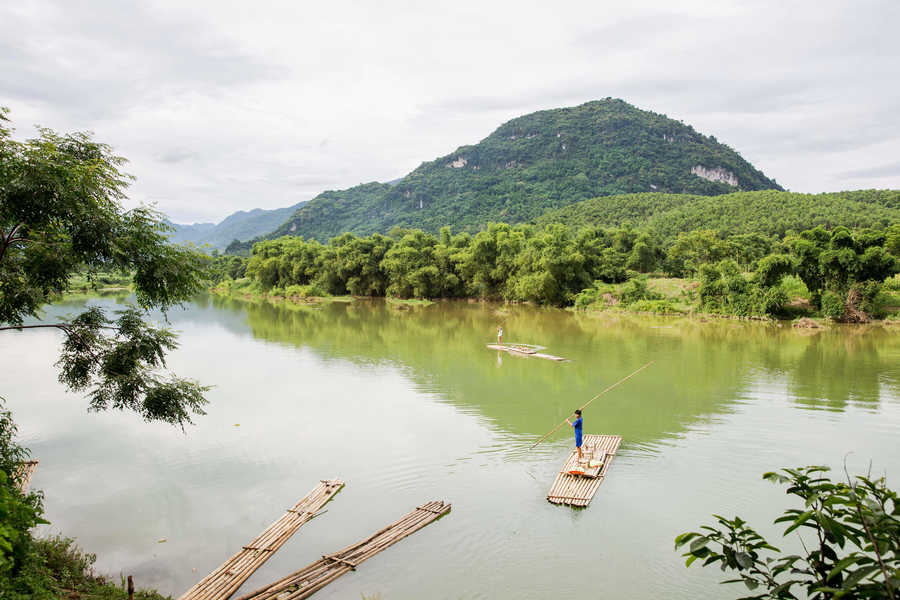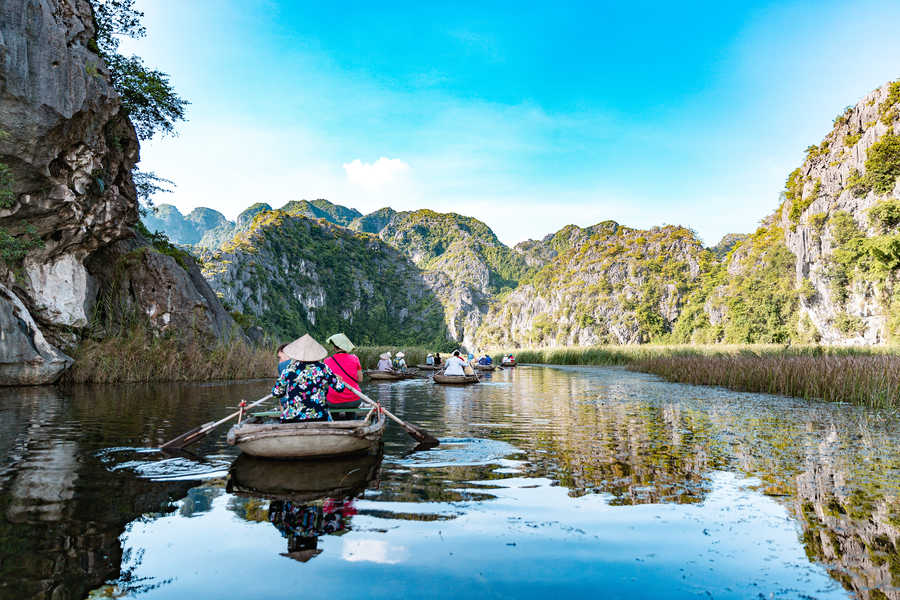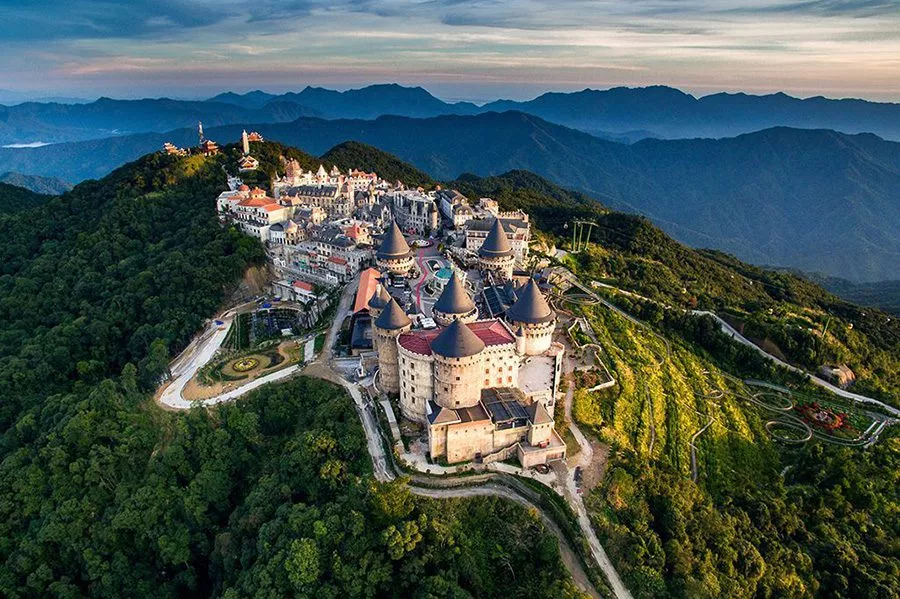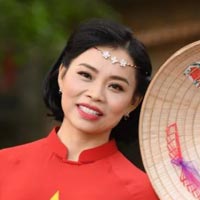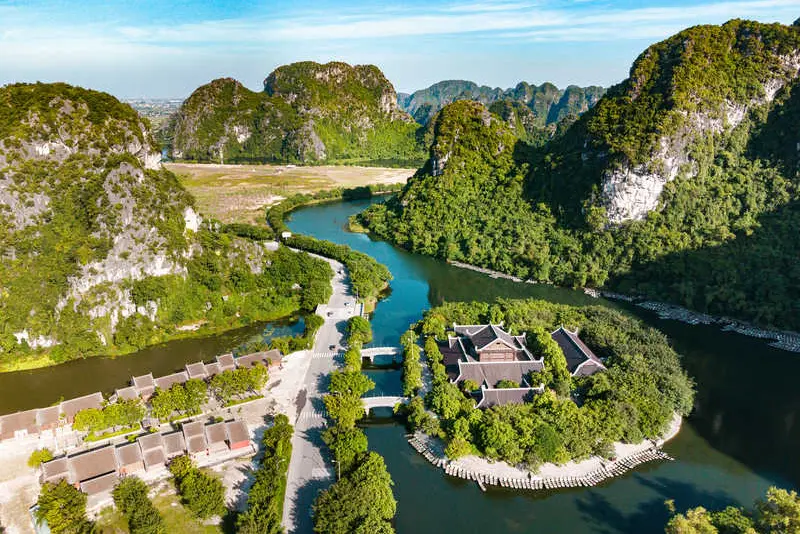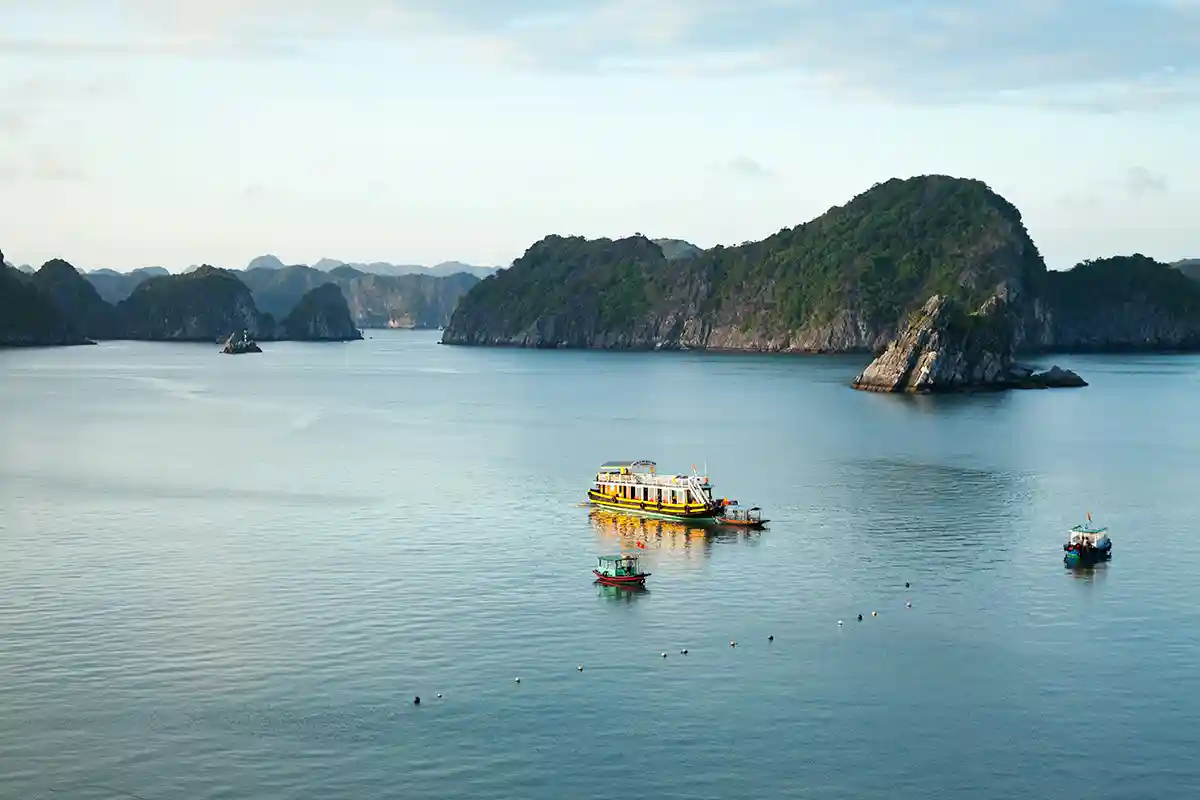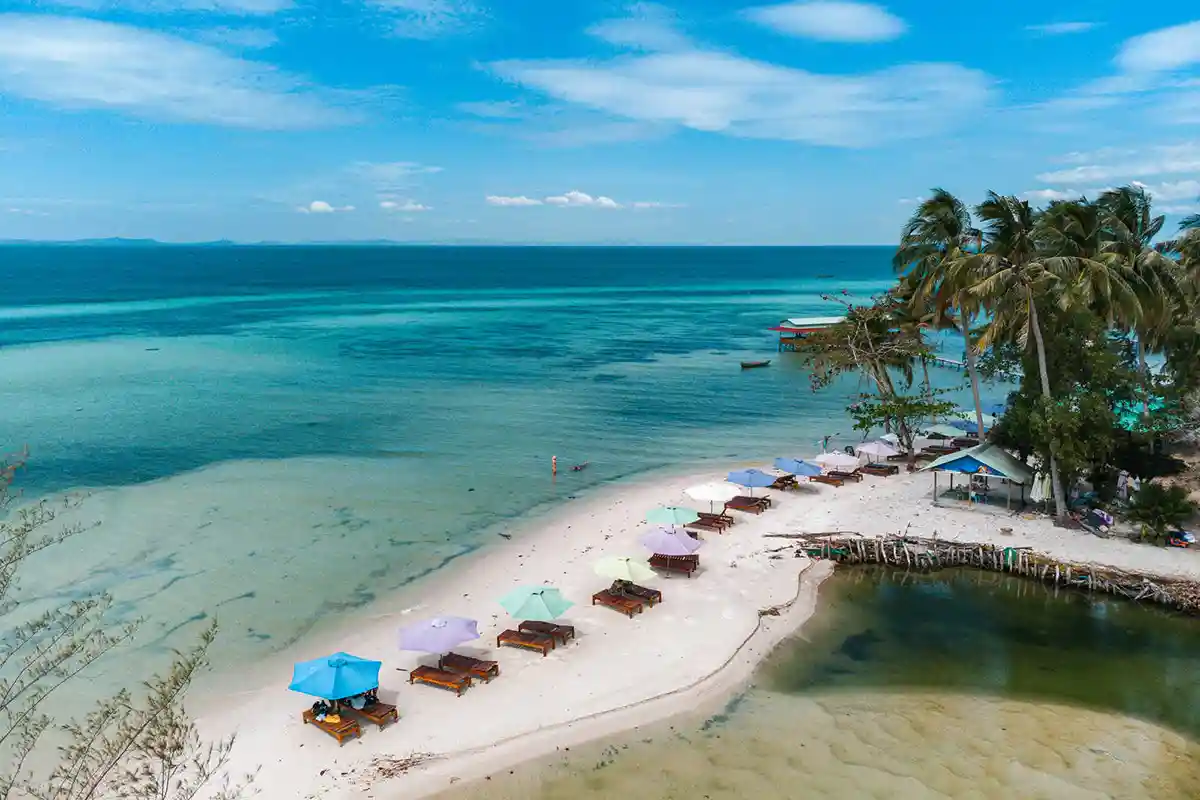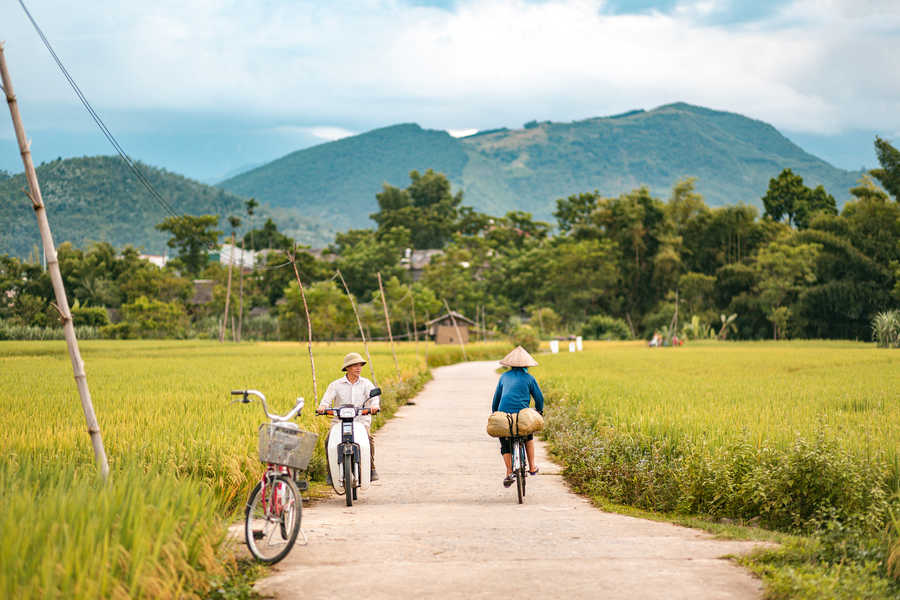Long Xuyen is the second-largest city in the Mekong Delta, the capital of An Giang province. The city lies on the west bank of the Hau River, and is a lovely stop between Can Tho and Chau Doc, near the border with Cambodia.
As you may have read in our article, the Cai Rang floating market in Can Tho is no longer quite what it used to be… So you might want something more authentic. Long Xuyen’s market, despite a noticeable decline in activity since the Covid-19 pandemic, still maintains all its charm.
But the region is also rich with both ancient and more recent history. About forty kilometers west of the city is the archaeological site of Oc Eo, which was probably a major port town in the Funan kingdom that dominated the Mekong Delta between the 1st and 7th centuries CE. On the other side of the city lies the Tiger Island (Ho Oc), which is home to the childhood house of Ton Duc Thang, who succeeded Ho Chi Minh as President of Vietnam
What to do in Long Xuyen?
Visit the floating market and the Khmer village
Before roads and bridges were developed, people in the Mekong Delta used to trade via canoe and boat. For centuries there were many floating markets in the region. Today, although large markets are more often on land, and transport infrastructure has expanded, some people continue trading on the water.
This is one of the unique cultural features of the Mekong Delta in general, and An Giang province in particular. Unfortunately, the Covid-19 pandemic significantly affected these activities, accelerating the decline of what made the delta’s identity. Nevertheless, the floating market in Long Xuyen still exists and is authentic—it’s not organized for tourists like the one in Can Tho
You’ll depart from the O Moi river pier, located on the banks of the Hau River in the My Phuoc neighborhood. Small motorboats take tourists to see all corners of the floating market. It’s recommended to go around 5:30 in the morning—people there will offer to take you. During the visit, the author explored it with Mr. Ba Do, who knows many of the local sellers
Along the way, you can enjoy the sunrise over the river, with streaks of pink and white clouds weaving together in the sky—a magnificent sight.
Traditionally, goods are displayed for sale by being hung on a pole at the front of boats. Each boat displays a different item — vegetables, tubers, fruits, or whatever is needed for daily life.
After the floating market, your local guide may take you to a floating village close by. It’s inhabited by Khmer families who settled there because they don’t have official papers to live on land.
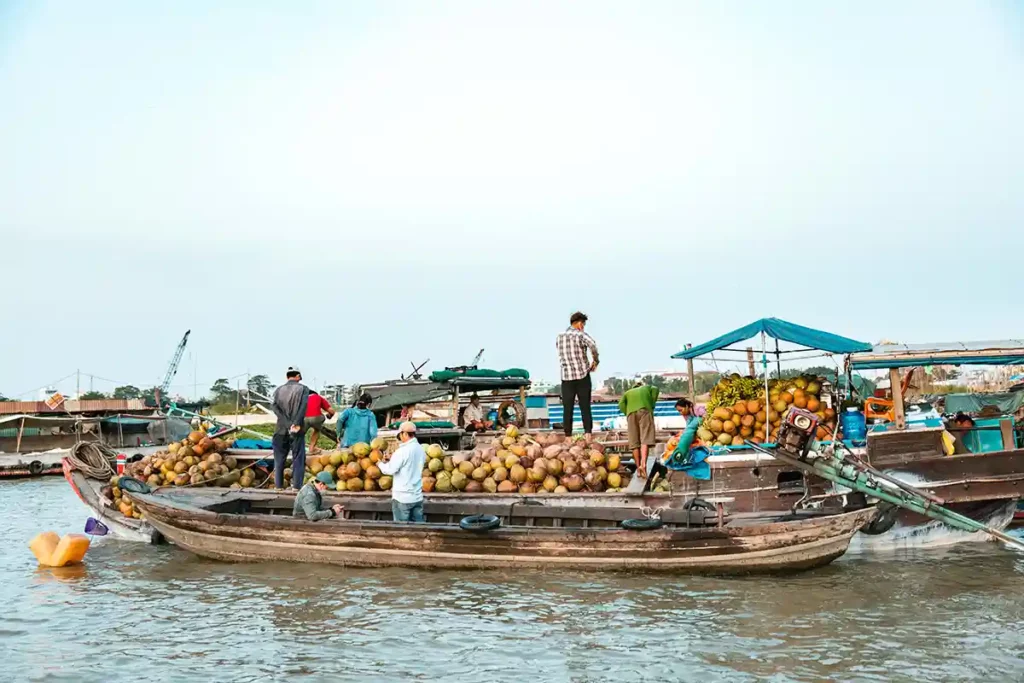
Walk around the land market
The land market in Long Xuyen is right next to the O Moi pier. It’s recommended to stroll there after returning from the floating market. You’ll see it’s a very large market, reflective of Long Xuyen—second city in the Mekong Delta
Typically, there is a main building used by wholesale sellers: large amounts of fruits and vegetables ready to be distributed to local restaurants. Upstairs are clothing and textile vendors. Around the main building, you’ll find stalls selling fruit, vegetables, meat, fish, etc.…
Visit Ong Bac Temple
An Giang is a unique province where Chinese, Khmer, and Cham communities live together. Religious buildings from these cultures can be found throughout the province. The Chinese presence has long influenced local life, and many sanctuaries dedicated to saints were built to bless the Chinese community of that time.
Among them is the Ong Bac Pagoda (also known as Bac De Mieu). It was originally the first meeting hall of the Chinese community in An Giang, located on Pham Hong Thai Street by the Long Xuyen river, near the market we just described
The pagoda was built by Chinese people from Guangdong province who settled in An Giang. Originally a gathering place / community hall for people from that region of China, it later became a place where deities such as Bac De, Thien Hau, Ngoc Hoang and Quan Cong are worshiped. Hence, locals call it a pagoda now.
Built over 100 years ago, when Long Xuyen was still called Dong Xuyen, it belonged to the village of My Phuoc in Tay Xuyen district during the Nguyen dynasty. Construction began in the Year of the Horse (1887), after two wealthy regional Chinese, Mr. Quang Thanh Loi and Hoa Mau Xuong, raised funds from the community and believers. After four years of work, the temple was finished in the Year of the Dog (1891). From then on it became an important artistic and architectural work in Long Xuyen.
It’s a typical Cantonese style building, dark yellow combined with red and brown, with the curved motif on the tiled roof. It was officially recognized as a national historical and cultural relic in June 1987
The Bac De temple still preserves much of its original state and houses many precious relics from its construction
The temple holds worship ceremonies on full moon days each month. In particular, on the 3rd day of the 3rd lunar month every year there is the Bac De worship ceremony, considered the largest of the year. The 23rd day of the 3rd lunar month is for worshiping the goddess Thien Hau Thanh Mau; the 24th day of the 6th lunar month is dedicated to Quan Cong
Stroll on Tiger Island (Ong Ho)
Located in My Hoa Hung commune, on the Hau River, Ong Ho Island was formed by river silt.
According to legend, its name (“Tiger Island”) comes from the fact that many tigers and leopards once lived there among reeds and marshes. Today there are no wild animals, but many people live there.
To get there, you can take the ferry from the My Hoa Hung or O Moi docks—the same dock used for the floating market—or ask a boat owner to take you; the trip takes only about 15 minutes.
Once there, you’ll find a little microcosm of the Mekong Delta: beautiful old houses, gardens of fruits and vegetables everywhere!
There are a few homestays that will host you for the night, and you can rent bicycles—the best way to explore the island
Beyond the quiet and charm of the place, the island is known by Vietnamese people for being the birthplace of Vietnam’s second president, Ton Duc Thang. Known locally as Uncle Ton (like Uncle Ho), his childhood house still stands there and has become an important memorial
Visit the An Giang Museum
For an in-depth view of Long Xuyen’s history before and after the war, we recommend visiting the An Giang Museum. The museum’s exhibitions focus on the history of the French invasion and the Vietnam War in Long Xuyen, displaying artifacts from both the colonial and wartime periods. The museum also introduces visitors to the diversity of local culture, with exhibits on local ethnic and religious groups offering insight into the province’s rich cultural heritage.
Discover the archaeological site of Oc Eo
Between the 1st and 6th centuries CE, when southern Vietnam and southern Cambodia were under the rule of the Indian-influenced Cambodian kingdom of Funan, Oc-Eo (37 km southwest of Long Xuyen) was a major trading city and an important port. In the late 1990s, archaeological excavations were carried out, uncovering skeletons in burial jars, elaborate gold jewelry, weapons, numerous pottery pieces, and more. Only a few foundations remain today, but it is a lovely countryside walk to get there.
Much of what is known about the Funan Empire, which reached its peak in the 5th century CE, comes from contemporary Chinese sources and excavations at Oc-Eo and Angkor Borei in neighboring Cambodia. The excavations revealed evidence of contact between Oc-Eo and what is now Thailand, Malaysia, and Indonesia, as well as Persia and the Roman Empire.
A complex canal system around Oc Eo was used for both irrigation and transportation, prompting historical Chinese travelers to write about “navigating through Funan” to reach the Malay Peninsula. Most buildings of Oc Eo were built on stilts; the remains show the civilization had achieved high sophistication. The found artifacts are on display in the History Museum and Fine Arts Museum of Ho Chi Minh City and in the History Museum of Hanoi.
Where to Stay in Long Xuyen
Still very little tourist traffic, the city does not offer many lodging options … We recommend the Chau Khuong Hotel, a new establishment with lovely rooms. Expect about US$50 per night with breakfast.
Expect to pay around $50 per night with breakfast included. For roughly the same price, there is also the Hoa Binh 1 Hotel, which has a swimming pool but whose rooms are a bit outdated…
Encore très peu touristique, la ville n’offre pas beaucoup de choix pour le logement… Nous vous conseillons le Chau Khuong Hotel, un établissement neuf avec de belles chambres. Compter environ 50 dollars la nuit avec petit-déjeuner. Pour sensiblement le même prix, vous avez également le Hoa Binh 1 Hotel qui dispose d’une piscine mais dont les chambres sont un peu vieillotes… Finally, the newly opened M Homestay, which appears to focus on minimalist décor… Rooms cost around $20 per night.
If you want to stay on Tiger Island, there are several homestays with basic comfort. They suggest rather staying in the city and spending a half-day biking on the island.

